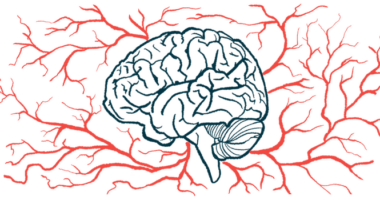Autism traits prevalent in children with Angelman; are stable with age
Patients with most common gene defect had more autistic features

Sensory problems and other features of autism spectrum disorder (ASD) were prevalent in children with Angelman syndrome and were generally stable over time, a report suggests.
Children with the most common type of genetic defect that causes Angelman, called the deletion genotype, exhibited more autistic traits than those with other disease-causing genetic abnormalities.
“Incorporating the assessment of autistic traits and sensory processing into clinical practice for [Angelman] is important to inform adaptations of the environment to meet the child’s needs,” the researchers wrote. The study, “Age-Related Trajectories of Autistic Traits in Children With Angelman Syndrome,” was published in Autism Research.
Angelman syndrome is a rare neurodevelopmental disease caused by genetic abnormalities that lead to the absence or malfunction of the maternally-inherited UBE3A gene. It most often arises when the section of the maternal chromosome 15 where UBE3A normally resides is mistakenly deleted — the deletion genotype. Symptoms include intellectual disability, speech problems, motor impairments, and seizures, among others. ASD is also common, with studies reporting rates ranging from 42% to 81%, according to the researchers.
Features of ASD include problems with social interaction and communication, repetitive and inflexible patterns of behavior, and sensory challenges such as being oversensitive or less sensitive to sounds, sights, or smells.
Autism traits and aging
Data suggest that, in general, the severity of autistic traits may change over time and some studies find they tend to decrease as patients age. The age-related trajectory of autistic symptoms in Angelman hasn’t been thoroughly investigated, however, leading researchers to evaluate symptoms in 107 children with Angelman, ages 2-18, who were seen at a specialist center in the Netherlands.
Autism features were evaluated with different clinical tools at an initial assessment and the participants were invited to return every three to four years, with 49 participants returning for a second evaluation and 14 for a third.
At the first visit, 16% of the children met the diagnostic criteria for ASD established in the Diagnostic and Statistical Manual of Mental Disorders (DSM), and rates of ASD increased by age group. Specifically, 13% in the youngest age group (ages 2-5.9) had ASD, which rose to 32% in the oldest age group (14-18.9).
Results of different clinical evaluations
In contrast, three-quarters of the participants were in the ASD score range when evaluated with the Autism Diagnostic Observation Schedule (ADOS), a clinician-administered test where higher scores reflect more autistic traits.
ADOS scores didn’t significantly vary with age. While scores on the restricted/repetitive behaviors subscale were unaffected by age, scores on the social affect subscale, which looks at social interaction and communication, decreased over time. Total ADOS scores, and scores on each of its subscales, were higher in children with the deletion genotype than with other types of genetic abnormalities.
Moreover, while ADOS scores were generally stable in children with the deletion genotype over time, they decreased with age in those whose cause of disease are UBE3A mutations.
Likewise, scores on the Social Responsiveness Scale, another measure of autistic-like traits that’s completed by caregivers or teachers, showed scores weren’t influenced by age, but children with the deletion genotype and who were male had more autistic traits.
Finally, the caregiver-reported Short Sensory Profile (SSP) looked at sensory issues in the children, where lower scores reflect greater sensory problems. These scores were “exceptionally low” and the researchers said this indicates children with Angelman “have significantly more sensory processing problems than children in the general population.” SSP scores weren’t influenced by age or genetic factors, although scores for certain subscales differed across genetic disease subtypes and sexes.
Overall, “we found a high prevalence of autistic traits and sensory processing problems,” wrote the researchers, who noted that, “on average, autistic traits do not change over time.” They emphasized a need for routine assessments of ASD features in children with Angelman in order to ensure they get proper care. They said the discrepancy between the proportion of patients who met ASD criteria with the DSM versus ADOS shows that ADOS, which isn’t specifically designed for Angelman, might over-diagnose ASD.
“Diagnosis of ASD in AS should always be made based on a combination of diagnostic instruments … information from different sources, and expert clinical opinion in a multidisciplinary team,” they wrote.







